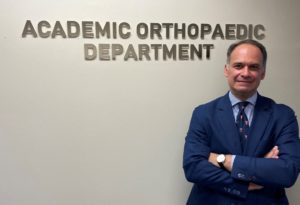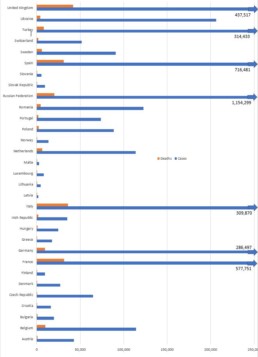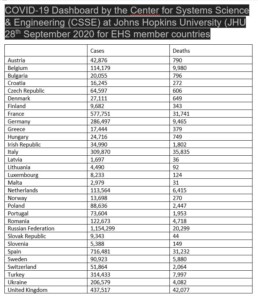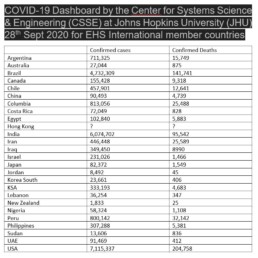EHS Secretary General, Professor Eleftherios Tsiridis
 Winter approaches and COVID-19 is increasing in many parts of the world. Governments everywhere are in constant discussion with their scientists and are taking decisions against this common enemy to try to limit overwhelming their health systems and protect their medical staff and populations, especially the most vulnerable. To date, there have been over 33 million cases of COVID-19 worldwide and just over one million deaths.
Winter approaches and COVID-19 is increasing in many parts of the world. Governments everywhere are in constant discussion with their scientists and are taking decisions against this common enemy to try to limit overwhelming their health systems and protect their medical staff and populations, especially the most vulnerable. To date, there have been over 33 million cases of COVID-19 worldwide and just over one million deaths.
It’s not bad news everywhere, however. Below is a very nice report from our member in Australia, Prof Riaz Khan, who reports from Perth on his COVID-experience. Thank you to him. Following this, we summarise the Johns Hopkins University data.
Please contact the EHS Secretarial Office via our Membership Secretary (samstokesehs@gmail.com) with reports on the COVID-19 developments in your area which you would like to share directly with our fellow hip surgeon members.
COVID-Experience of a hip surgeon in Australia, by EHS International Member, Prof Riaz Khan

Dear Fellow EHS Members,
I am an orthopaedic surgeon in Perth, Western Australia (WA). It’s a pleasure to touch base with all my colleagues around the world.
I’d like to inform you of the impact of the CV19 pandemic on our state. First, let me put our location in context. Australia is made up of 6 states and 2 territories, each of which is governed by its own premier. There is a federal prime minister who oversees the country. Western Australia is the largest state, covering 2.5 million square kilometres (10 times the size of the UK). There are 2.7 million inhabitants, 2 million of which live in the Perth metropolis. Perth, in the south of the state, is reputed to be the most remote city in the world (5 hours flight to Singapore and Sydney). Our health service is roughly equally split between a public National Health Service, and private.
On the 11th March of this year the WHO declared the COVID crisis a pandemic. On the 15th March, WA declared a State of Emergency, and our national and international borders were closed. At that time all non-urgent operating was cancelled, and the state went into enforced lock down.
After 6 weeks the crisis was under control, and there were no cases of community transmission. On the 28th April the WA government relaxed the lock down restrictions, and commenced a staged reopening of elective surgery, initially at 25% capacity, to full capacity from the 15th June. Our borders remain closed, both to international travellers and travellers from other states (though some exemptions apply). Most recent data shows WA has had a total of 668 cases of CV19 and 9 deaths.
From the 15th of June there was a hectic period in private, catching up with the back log of joint replacements. The current number of joints performed remains at a higher than average rate but is normalising. The catch up has been slower in the public system where the wait list for elective operations is 18% higher than the same time last year.
At present we have zero community transmission and a few isolated cases from overseas travellers (returning nationals) who are in quarantine. As a result, there are currently very few restrictions imposed on us. As you will have heard the situation on the eastern side of the country, especially Melbourne, is quite different. They are just coming out of a second wave.
We in Western Australia are acutely aware that our circumstances are very different to most countries in the world. And although its ‘business as usual’ here, we feel for those of you who’s experience is not as happy. Wishing you all the very best!




